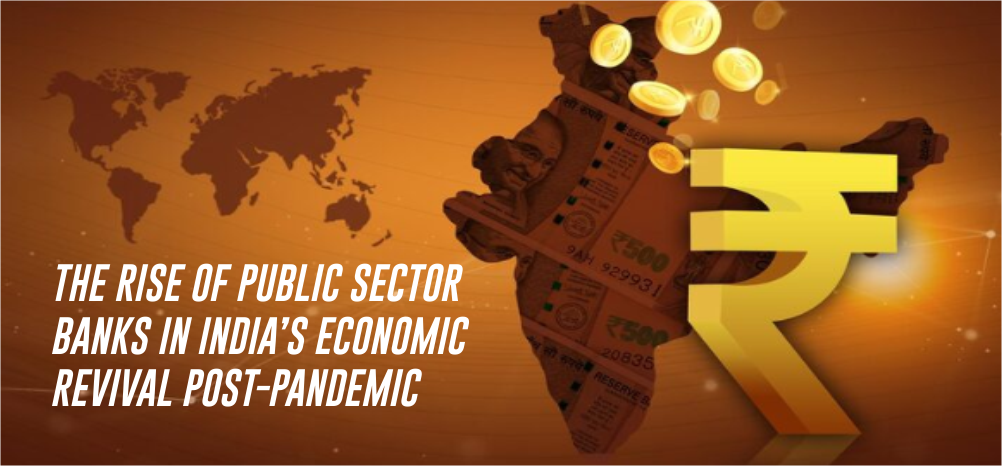India occupies a significant position in the global education sector, with one of the world’s largest networks of higher learning institutions. With nearly 26% of the population in the 0-14 age group, the sector offers immense opportunities for growth and long-term development.
The number of colleges in India reached 52,321 in FY26 (as of August 11, 2025), up from 42,343 in FY20, while universities grew to 1,355 in FY26 from 760 in FY15. Notably, more than half of these institutions are located in rural areas, reflecting the sector’s wide reach.
India’s education market is projected to reach Rs. 26,94,617 crore (US$ 313 billion) by FY30. Within this, higher education, valued at Rs. 5,75,000 crore (US$ 68.06 billion) in 2024, is expected to nearly double to Rs. 11,60,000 crore (US$ 134.84 billion) by 2033, growing at a CAGR of 8.10%.
Online and technology-driven learning are transforming the landscape. The online education market is expected to expand by US$ 2.28 billion between 2021 and 2025 at a CAGR of almost 20%, while the Indian edtech sector, currently valued at Rs. 64,875 crore (US$ 7.5 billion) is projected to grow nearly fourfold to Rs. 2,50,850 crore (US$ 29 billion) by 2030. Increasingly, higher education institutes are developing digital programmes to meet this rising demand.
The sector has also been a steady magnet for global capital, with FDI equity inflows standing at Rs. 72,210 crore (US$ 9.98 billion) between April 2000 and March 2025. With strong fundamentals, a young population, and rapid digital adoption, India’s education sector is poised for sustained growth.
Coursera is expanding GenAI skills in India through partnerships with 18 leading universities, including IITs, IIMs, and BITS Pilani, along with Fractal Analytics for industry-focused courses. Its AI tool Coach has boosted course completion rates, especially among women and learners from weaker academic backgrounds, with generative AI course enrolments rising 107% YoY to 2.6 million as of August 2025, the highest globally.
In May 2025, the Indian Institute of Foreign Trade (IIFT) opened its first overseas campus in Dubai, advancing India’s higher education globalisation under NEP 2020 and serving global learners and the Indian community abroad.
Imarticus Learning has announced a partnership with PwC Academy in India to provide digital-savvy professionals with expertise in Generative AI (GenAI), as stated in a recent announcement in February 2025.
India’s large English-speaking population allows easy delivery of educational products. 54 Indian institutes, including the Indian Institute of Science (IISc) Bengaluru and eight IITs got featured among the top 500 universities in the QS World University Rankings CY26.
In the QS World University Rankings: Asia 2025 India stands out with two universities in the top 50 and seven in the top 100, led by the Indian Institute of Technology Delhi (IITD) at 44th place.
India along with UK rank third for the most numbers of universities in Times Higher Education University Rankings CY25.
The Government of India’s Rs. 60,000 crore (US$ 7.02 billion) ITI modernisation scheme will upgrade 1,000 institutes in partnership with leading corporates and train two million youth in five years. The programme will align training with industry needs, overseen by a National Steering Committee and supported by global lenders.
In May 2025, Oracle, in collaboration with Andhra Pradesh State Skill Development Corporation, began digitally training 400,000 students in emerging technologies including Oracle Cloud, AI, Data Science, DevOps, and Security through over 300 hours of structured learning on Oracle MyLearn. The programme provides certifications and skill badges to enhance employability and prepare youth for future technology roles.
The edtech sector drew Rs. 1,23,883 crore (US$ 14.4 billion) in private equity and venture capital from 2015-2025. In January 2025.
In January 2025, CL Educate Limited acquired NSEIT Limited’s Digital Exam Assessment (DEX) business for Rs. 230 crore (US$ 26.6 million) upfront and Rs. 75 crore (US$ 8.7 million) earn-out, entering India’s Rs. 7,000 crore (US$ 809.5 million) assessments market.
In September 2024, PhysicsWallah raised 1,774 crore (US$ 210 million) from Hornbill Capital and Lightspeed at a Rs. 23,657 crore (US$ 2.8 billion) valuation to expand operations, with SEBI having approved its IPO in July 2025.
In October 2024, edtech firm Eruditus raised Rs. 1,267 crore (US$ 150 million), in a funding round led by US-based TPG Rise, with participation from global investors including SoftBank Vision Fund 2, Accel, and CPP Investments.
Union Minister for Education, Mr. Dharmendra Pradhan, announced the establishment of three AI Centres of Excellence (CoE) in New Delhi, focusing on Healthcare, Agriculture, and Sustainable Cities. These CoEs, aimed at realizing the vision of "Viksit Bharat," will be led by leading educational institutions in collaboration with industry partners and startups.
Amazon launched its global computer science education initiative in India. The aim of this initiative was to offer one lakh students the opportunity to study computer science. Amazon India also launched the second edition of Machine Learning (ML) Summer School, with the aim to provide students the opportunity to learn important ML technologies from Amazon scientists, making them ready for careers in science.
To liberalise the sector, the Government has taken initiatives such as the National Accreditation Regulatory Authority Bill for Higher Educational and the Foreign Educational Institutions Bill. The government schemes of Revitalising Infrastructure and System in Education (RISE) and Education Quality Upgradation and Inclusion Programme (EQUIP) are helping the government tackle the prominent challenges faced by the education sector.
The National Education Policy (NEP), which will be fully implemented over the course of this decade starting from 2021-22, will have a strong focus on high-quality vocational education. Under the National Education Policy 2021, the government will set up regional and national institutes for virology, >15,000 schools, 100 new Sainik schools, and 750 Eklavya model residential schools in tribal areas.
The Union Cabinet, led by Prime Minister Mr. Narendra Modi, has approved the PM Vidyalaxmi scheme, aimed at providing financial support to meritorious students to ensure that financial constraints do not hinder their pursuit of higher education. This initiative aligns with the recommendations of the National Education Policy.
In August 2023, Union Minister of Education Mr. Dharmendra Pradhan unveiled the National Curriculum Framework for School Education (NCF), which has been developed based on the National Education Policy (NEP), 2020 vision. As per that, in order to guarantee that students have adequate time and opportunity to perform successfully, board exams will be offered at least twice a year.
The Central Government approved the “New India Literacy Programme” for the period FY22-27 to cover all the aspects of adult education to align with the National Education Policy 2020 and Budget Announcements 2022-23.
In July 2025, The Ministry of Minority Affairs launched the Pradhan Mantri Virasat Ka Samvardhan (PM VIKAS) scheme to empower minority communities through skill development, entrepreneurship, women’s leadership training, education, and cultural heritage promotion.
In March 2025, IIT Guwahati is developing “Gyandhara,” India’s first VR-enabled metaverse platform, to teach maths and science in local languages at PM Shri schools, starting with a pilot in 56 schools in Assam later this year.
STEM-based edtech companies have been partnering with Niti Aayog and the government to build a STEM ecosystem by establishing Atal Tinkering Labs (ATL) to spread knowledge about STEM, STEAM, AI, ML, and robotics for K-12 students.
Going Global Partnerships launched UK-India Industry-Academia TNE Grants 2025-26, offering up to US$ 23,294 for projects starting September 30, 2025, to foster UK-India education and industry collaboration.
In May 2025, The Indian Institute of Foreign Trade (IIFT) opened its first overseas campus in Dubai, advancing India’s higher education globalization, serving global learners and the Indian community abroad.
In December 2023, UNICEF and its global partnerships platform Generation Unlimited (also known as YuWaah in India) partnered with key organisations committed to working towards a green future for children and young people as a part of the Green Rising India Alliance.
In September 2023, the government launched the Skill India Digital (SID) platform to make skill development more innovative, accessible and personalised with a focus on digital technology and Industry 4.0 skills.
In September 2023, a three-year partnership called "Education to Entrepreneurship: Empowering a Generation of Students, Educators, and Entrepreneurs" was launched by the Ministry of Education the Ministry of Skill Development and Entrepreneurship, and Meta in New Delhi.
The Union Cabinet approved the continuation and restructuring of the Skill India Programme till 2026 with an outlay of Rs. 8,800 crore (US$ 1.01 billion) to enhance industry-aligned, tech-driven training nationwide.
The education sector has seen a host of reforms and improved financial outlays in recent years that could possibly transform the country into a knowledge haven. With human resources increasingly gaining significance in the overall development of the country, the development of the country’s education infrastructure is expected to remain the key focus in the current decade. In this scenario, infrastructure investment in the education sector is likely to see a considerable increase.
India’s education sector is rapidly evolving into a global hub of learning, innovation, and skill development. With strong government support, rising digital adoption, global collaborations, and a young demographic base, the sector is well-positioned to expand its global footprint and shape a future-ready workforce. Going forward, India is set to play a leading role in redefining education worldwide, blending technology, inclusivity, and academic excellence to drive sustainable growth.














